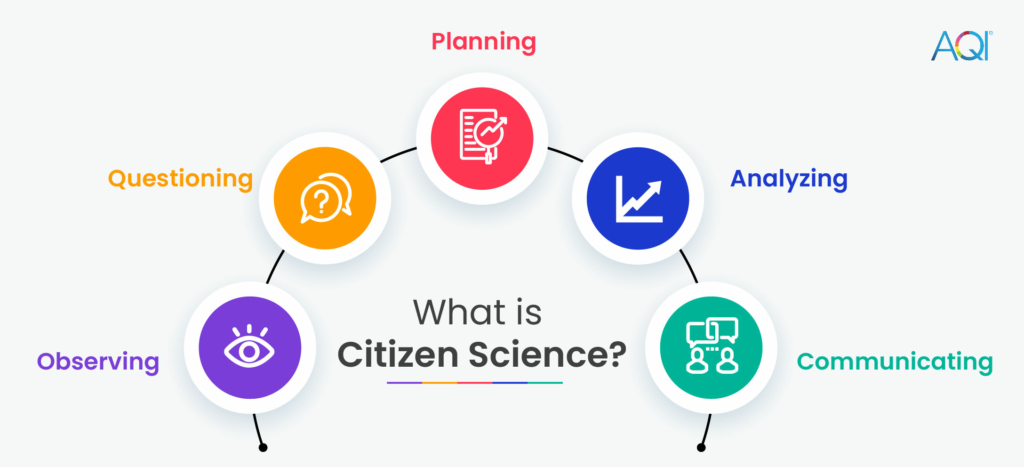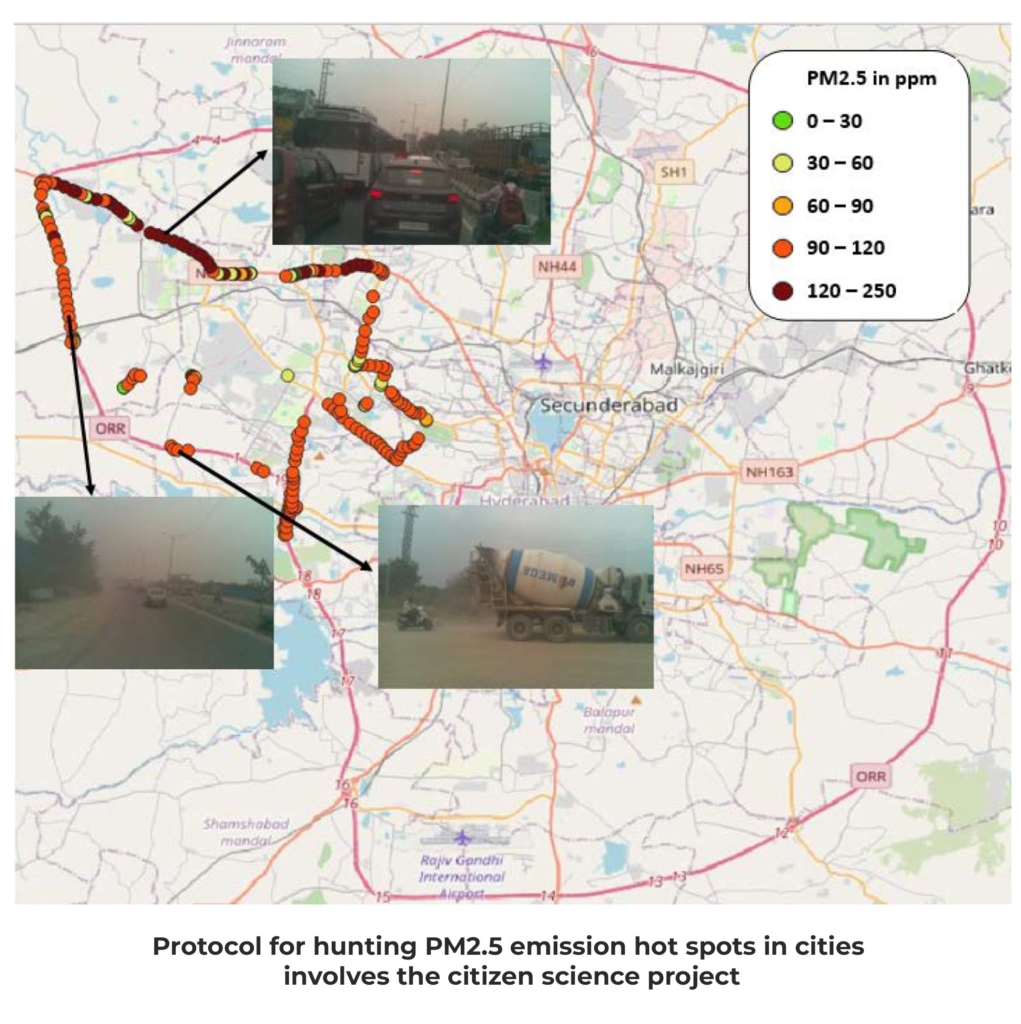Air pollution impacts have increased in recent years. Consequently, air quality has become a major concern. The rising concern requires better and latest approaches to tackle the problem. Hence, the trend approach, as citizen science, can help in monitoring. Moreover, citizen science can become a powerful tool for improving air quality monitoring. Because it increases the engagement of civils, individuals, communities and organizations. Hence, they can easily gather the data and raise awareness about the pollution. Let us delve more into Citizen science role in air quality improvement!
What is citizen science?

Citizen Science is a great initiative where the citizen helps scientific research. Since the general public can volunteer for any research or study. Therefore, they research and collect data to provide to researchers. It involves data collection, analysis, observation, experiments and problem-solving. Regarding it, the project organizers provide the equipment and technologies. Thus, citizen Science helps in many ways. As in data collecting on a large scale. Alongside this, it also raises public awareness and literacy on the concern. Hence, the concept is beneficial for all.
What is its role in air pollution monitoring?
Air pollution is becoming a major concern for the environment and human health. Since, a report by WHO depicts that. As 99% population lives in areas with high pollution. It means that air quality guidelines levels are not met. Moreover, air pollution poses various health diseases. Such as stroke, lung cancer, heart disease and respiratory problems. Thus, ordinary public involvement in air quality monitoring can help. Citizen Science can help in improving the air quality. As it increases the engagement of civilians in gathering data. Concerning this, air quality monitor installation is necessary in the project areas.
It helps in making people more interested in knowing what they are breathing. In this situation, low-cost air quality monitors can install on the ground level. Since Air pollution in many places is highly concerning. The program can introduce air quality monitors to gather the necessary data. Likewise, it can help with providing the essential details to civil. It can encourage citizens by promoting necessary data on social media. As through local agencies and centres including schools and health centres.
This is how citizen science plays a vital role in improving air quality:
Data collecting:

Citizen efforts make data collecting more easy. Because it involves affordable sensor use and various monitoring stations. Through it, data collecting on a large scale is possible. Hence, it provides extended data from different locations and time zones.
Pollution hotspots observation:

Air quality monitors can be installed in different areas. Such as schools, workplaces etc. Since, it helps in knowing and monitoring pollution hotspots.
Awareness:

These projects increase the public awareness about the pollution. On the ground level, they educate communities.
What are the citizen science benefits for air quality?
Citizen science has many benefits in improving air quality. It educates communities on different levels. Besides, it makes them aware of the importance of clean air. Know its benefits in detail:
Data availability:

Citizen science projects avail the air quality data on a vast level. Given that, numerous volunteers provide extensive datasets. It helps in knowing pollution hotspots, trends and patterns.
Coverage on pollution:

It involves installing sensors and monitors in different locations. Hence, it provides spatial coverage with various identifications.
Reporting air quality:

These projects provide real-time air quality data. Because, the advanced technologies used in gathering the data. It helps in taking rapid action to mitigate the risks and sources.
Better engagement:

It involves engaging various individuals and communities for air quality monitoring. Through it, they feel more responsible and empowered in the air quality issues. It also promotes public awareness and decision-making on the air quality.
Case study:
A research paper “Protocol for hunting PM2.5 emission hot spots in cities” involves the citizen science project. In this case, The International Institute of Information Technology – Hyderabad. And the University of Helsinki, Finland have calibrated. They have collected the data to know the PM 2.5 emission. Concerning this, they have employed low-cost sensors and advanced technology devices. Prana Air devices are used in the project that measure various pollutant concentrations. It enables the mobile sensing through IoT devices. Air quality monitors are installed in the entire Hyderabad city. It placed on buses, cars and other vehicles. For this, they have handed portable handheld IoT devices to citizens.

Since it enables better data sharing on air quality in Hyderabad. As they have got the actionable data as per the hotspots. For this, they have recommended local people share the information on PM 2.5 emissions. Moreover, it helps them cover the entire Hyderabad city on a large basis. Through it, the data collection becomes easy and better.
How to become a citizen scientist?
Becoming a citizen scientist is much easier. Anyone can become a citizen scientist without any advanced degree. Because it just needs your support and interest in knowing the air you breathe. For it, you just required some free time to volunteer in the research.

Here are the steps to become a citizen scientist:
- Check for current projects on air quality monitoring.
- Select the project as per your schedule.
- Know more about the data collection process for air quality.
- Actively participate in checking and collecting the air quality data.
- Share or submit your data to the organizations.
- Know about the results as research paper or journal publishing.
- Make awareness among your friends, family and communities.
Conclusion:
In the overview, citizen science is a powerful tool for improving air quality. As in the given case study, it has helped in gathering the required data easily. Since, it supports making individuals aware of the air quality. Check out the ways to become a citizen scientist easily. Through it, you can also volunteer and perform research on the air quality. Hence, know the air you breathe through becoming a citizen scientist. You can also learn about many technical and various information on the air policies. Lastly, through it, you can contribute to creating a healthier environment for all.